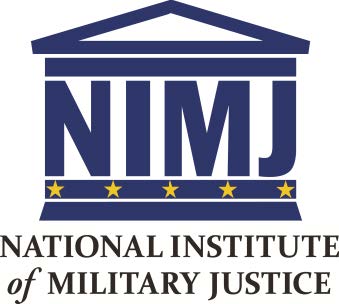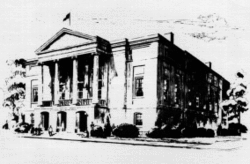|
In Palacios-Cueto, the CAAF finds no IAC during the sentencing case and the erroneous arguments of trial counsel were harmless. Appellant faults his civilian defense counsel and trial defense counsel (hereinafter referred to collectively as defense counsel [, see, e.g., United States v. Boone, 42 M.J. 308 (C.A.A.F. 1995). And see United States v. Golston, 53 M.J. 61, 67 (C.A.A.F. 2000) (Gierke, J., concurring) (this team approach is equally applicable to the prosecution.)] for several deficiencies: failing to admit evidence of a potentially mitigating matter during sentencing; not advising him to address this and two other potentially mitigating matters in his unsworn statement; and not requesting tailored instructions regarding these matters. In the AFCCA opinion, decided 2-1, we find the IAC allegations were broader than those taken up by CAAF: issues with a suppression motion, instructions, defense argument on findings, and discovery. The AFCCA majority determined there was no prejudicial IAC. Judge Meginley, dissenting, would have found "counsel [were] ineffective in failing to present an effective sentencing case." As to the trial counsel's erroneous arguments, Judge Meginley "believe[s] those arguments materially prejudiced Appellant, as there is a reasonable probability that the outcome of the proceeding would have been different had trial counsel not committed error." He ended, In his closing argument, trial counsel admonished the members, “You will have the ultimate decision on . . . whether justice will be served, or whether the accused will be acquitted,” as if to say an acquittal would not be justice. Civilian defense counsel responded these are “words that should never come out of a prosecutor’s mouth;” I agree. The majority commented that “‘Justice’ must be tethered to the evidence and the burden of proof lest it be confused with justice for the victim or society or the military justice system.” Unfortunately for Appellant, looking at his case as a whole, I question whether “justice” has been served. I respectfully dissent. From CAAF, [S]ix [of eight] references to justice are not so easily dismissed. If we were to review these other statements in isolation, each of them would raise significant concerns. The members might have understood the twice-repeated statement during voir dire—“I’m here . . . in the pursuit of justice in this case”—to imply that Appellant’s defense counsel were not there to pursue justice. The members might have understood trial counsel’s request in his opening statement—“repair the little that can be repaired and bring justice to [A1C M.T.] by finding the accused guilty”—to mean that members should focus on providing relief to A1C M.T. rather than assessing the evidence. The members similarly might have understood trial counsel’s first remark during his findings argument—“you will have the ultimate decision . . . whether justice will be served, or whether the accused will be acquitted”—to mean that they should focus on justice rather than on the evidence. And both this remark and the other statement during findings ignore the Government’s burden of proving guilt. Finally, the second mention of justice during sentencing argument—“[A] sufficient punishment . . . will bring some form of closure to [A1C M.T.] for all that she has . . . endured in this year-and-a-half nightmare”—may have misguided the members. The CAAF, essentially agreeing with the Government's arguments, finds there is no prejudicial error. The Government, however, makes three responses. First, the Government argues that this Court should not view trial counsel’s statements in isolation, but instead under Donnelly, 416 U.S. at 637, must view them in context. Second, the Government argues that, in viewing the six problematic statements, we should not ascribe to them the “most damaging meaning . . . from the plethora of less damaging interpretations.” Id. at 647. Third, the Government argues that even if some statements were improper, the AFCCA was still correct in concluding that any error was harmless under the Fletcher factors.
But "not as severe as the misconduct that this Court unfortunately has seen in other cases. See, e.g., United States v. Norwood, 81 M.J. 12, 21 (C.A.A.F. 2021); United States v. Voorhees, 79 M.J. 5, 9 (C.A.A.F. 2019); United States v. Sewell, 76 M.J. 14, 17–19 (C.A.A.F. 2017); United States v. Frey, 73 M.J. 245, 249 (C.A.A.F. 2014); see also Berger v. United States, 295 U.S. 78, 84 (1935)."
Yes, I'm with Judge Meginley on this one as to the arguments. I have in mind several points on this, which we've discussed before.
Comments are closed.
|
Disclaimer: Posts are the authors' personal opinions and do not reflect the position of any organization or government agency.
Co-editors:
Phil Cave Brenner Fissell Links
SCOTUS CAAF -Daily Journal -2024 Ops ACCA AFCCA CGCCA NMCCA JRAP JRTP UCMJ Amendments to UCMJ Since 1950 (2024 ed.) Amendments to RCM Since 1984 (2024 ed.) Amendments to MRE Since 1984 (2024 ed.) MCM 2024 MCM 2023 MCM 2019 MCM 2016 MCM 2012 MCM 1995 UMCJ History Global Reform Army Lawyer JAG Reporter Army Crim. L. Deskbook J. App. Prac. & Pro. CAAFlog 1.0 CAAFlog 2.0 Archives
July 2024
Categories
All
|


 RSS Feed
RSS Feed